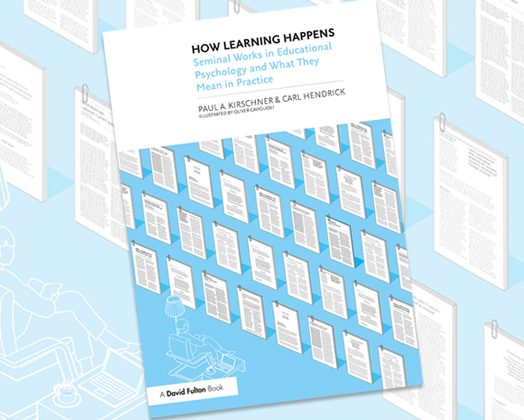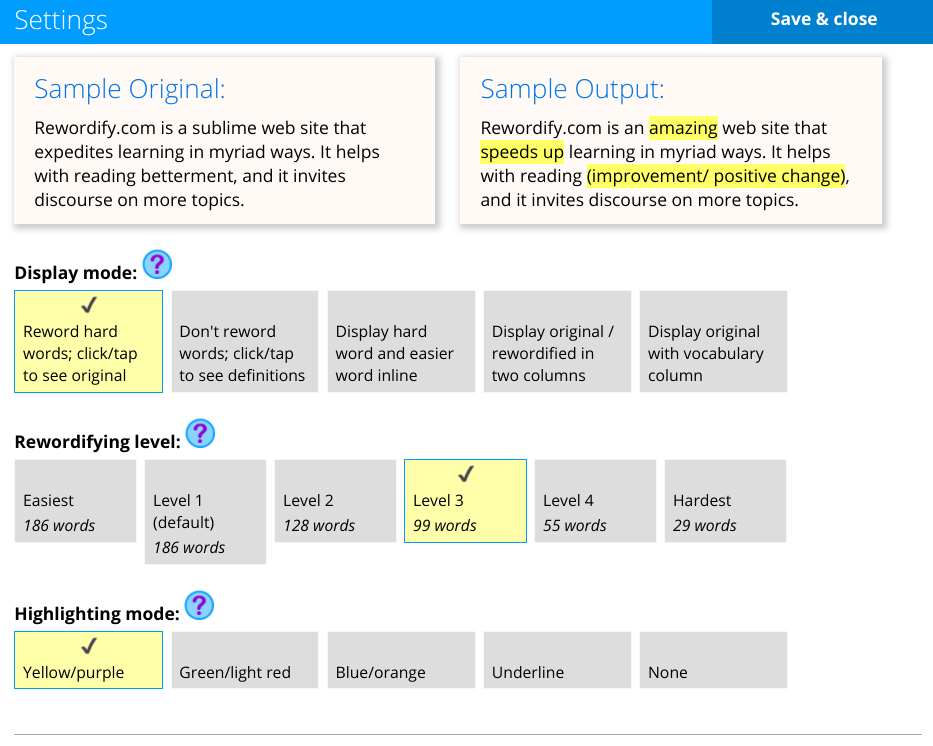In Part 4 of this post, together with Ben Windsor @MrClassics3 we discussed the importance of the corrective feedback stage of using RememberMore’s Classroom (CRM) function in practicality. Read it here.
The feedback stage of the RememberMore protocol closes the loop and allows a new one to be opened. As with the routines at the beginning of the learning cycle (where declarative knowledge often needs to be deepened and broadened), the importance of corrective feedback and elaborative questioning is an important tool in the armoury of a teacher.
The Deadpool Effect (two parts psychological security + one part student agency + one part low or no stakes, part 3 here) can be upheld to get the most out of learners and the RememberMore protocols. “There’s motivation in that there success” and “that there success is motivating.”
To achieve the lemon-squeezing and refinement of accuracy of the process, elaborative questioning plays a prominent role. Helping to create “confidently correct learners” by providing an opportunity to link back to the acquired declarative knowledge, supporting more threaded or connected-linked-up-thinking.
Now, this post is largely Ben’s work and reflections, I just add a little research evidence and conversation. So if you can spare the time, do head over to his blog – The Ursine Classicist.
So what is Elaboration?
The concept of elaboration among cognitive psychologists is broad and can mean a lot of different things, however elaborative interrogation is essentially asking ‘how’ and ‘why’ questions, elaborating on the opening question and response. It is constructing meaning of the subject matter by explaining, elaborating, making inferences, connecting new facts and ideas to prior knowledge.
The purpose of elaboration is primarily to improve our memory for the new information. An additional benefit is that it begins to organize our knowledge in a more coherent way. In one of the largest and most comprehensive meta-analysis of undergraduate STEM education published, Freeman et al., (2014) reported an average examination scores improved by about 6% in “active learning sections,” (elaboration) and failure rates reduced from 34% to 22% where elaboration was established practice.
Butler, Godbole, & Marsh, (2013) show further elaborating on the correct answer in the feedback can be important for later application of that knowledge. In fact, activation of elaborative information which would occur to a greater extent during retrieval practice over restudying – is one mechanism that is used to explain the broader concept of and effectiveness of Successive Learning.
Before we go on, not all elaboration techniques are equal. Elaborative information tends to increase performance only when it helps to specify the relevance of “target information.” In this situation, RememberMore tags / cues and notes provide excellent opportunities for elaboration as does making connections between the cues, between prompts or any presented information within RememberMore, particularly with Classroom. RememberMore “Notes” add yet a further layer.
You will not be surprised to know that those learners encouraged to self-explain outperformed those who read and reread material (Griffin, Wiley, & Thiede, 2008)
Testing the waters
Visual cues: Noting that students may be finished before the time limit is up, a visual cue is needed. Learners can put their pens down on their books, providing the body language clue needed to advance to the feedback stage.
Expectation: Correct, write in, or tick. This can be strengthened to include adding extra information as a base expectation.
Read body language. Psychological security is at its most fragile here. As per one of Rosenshine’s Principles – acquisition of a high level of success is key here, and is where the ‘Reorder’ function comes into its own.
Your retrieval prompt set: On which topics are you questioning? How spaced are those topics? Has the question pool been widened? All of these can impact student confidence and agency. With fair warning, limitation of expectation, and reassurance, psychological security and student agency can be protected.
Success: As higher levels of success are achieved, confidence increases. The change from hands-up to cold-calling can be made, increasing student agency and coaxing unwilling participants from the ‘passenger’ role of learning.
Our first piece of questioning is the question already displayed as part of the Classroom (CRM) interface – the retrieval prompt. Learner participation and volunteering of answers can be encouraged here but note the considerations above.
Also note – that the question is always on display and students are not expected to hold that information in their working memory.
A range of questions types is strongly recommended, too. Facilitated through the Deck-writing process, strengthened with verbal questioning. Here, recall is more powerful than MCQ recognition.
‘Fill in the Blank’ style questions provide a starting point for lower-confidence learners. The question becomes: What fills this gap? In fact this style of question was recently highlighted by Stanford researchers Ruan et al., (2019).
Verbal questioning can become more challenging – from your whats, to your whos, whens, wheres, and most challenging, your hows and whys. The retrieval prompts can handle the first 3, but your questions can reach higher.
Retrieval prompt: “What are some of the symptoms of the Bubonic Plague?”
Your follow-up: “How might a physician TREAT a patient with Bubonic Plague?”
Retrieval prompt: “Who pioneered vaccination?”
Your follow-up: “How did Edward Jenner pioneer vaccination?”
This questioning provides a link back to previous material to link together the ideas of disease and treatment in the Medieval Era, while also making the language more conditional. Conditional language in questioning adds to challenge as it provides greater scope, widening past just ‘the answer’ (singular) into a range of possibilities.
RememberMore is a prominent tool on the belt of the classroom teacher. As with many tools in use, it is down to the c
RememberMore is a prominent tool on the belt of the classroom teacher. As with many tools, it is down to the craftsman to maximise their use. Here, RM provides the heaving lifting, while the teacher in the room can reach and aim higher in stretching, strengthening, widening and deepening the breadth of knowledge to which we aspire.

All of this, while preserving the Deadpool effect, and providing the psychological security to create the confidently correct learners capable of success.
Co-posted with Teacher of Classics, @MrClassics3


